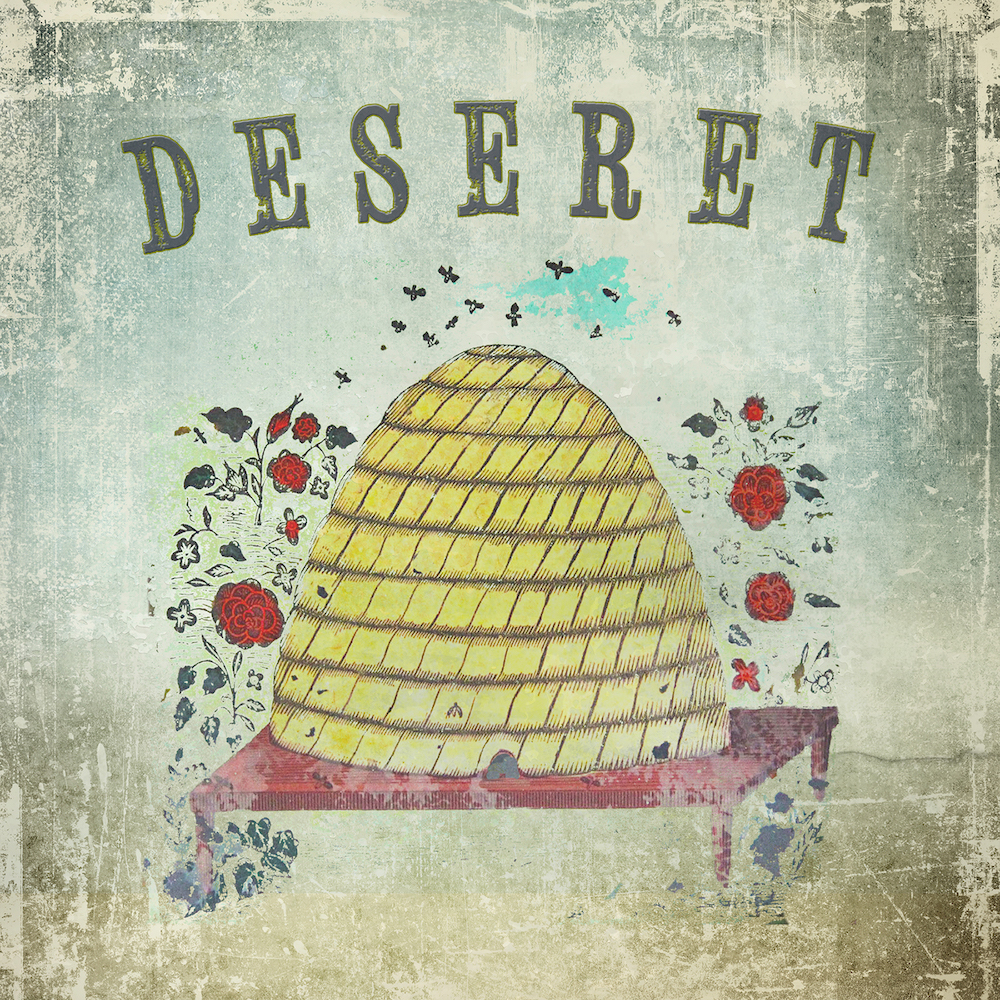Deseret
The word Deseret comes from the Book of Mormon, where it is mentioned only in Ether 2:3:
- And they did also carry with them Deseret, which, by interpretation, is a honey bee.
Early members of The Church of Jesus Christ of Latter-day Saints who emigrated to what would later become Utah adopted the distinctive name as a way to focus on the communal and beneficial traits common to colonies of bees—industry, thrift, and cooperation.
The first name proposed by Church leaders for what would later become Utah was the State of Deseret. However, this name was rejected by the federal government. Historian Susan Easton Black writes:
- Although the initial proposal was rejected, Brigham [Young] did not discard his plans for a State of Deseret within the United States. As governor of the Territory of Utah, Brigham ordered the building of the Beehive House as his official residence and office in 1854 (note that he did not order the building of a Utah House). More than any other residence in Salt Lake City, construction of the Beehive House sent a signal of Brigham’s continued hopes and plans for a State of Deseret. In reference to these hopes, he said, “[We will] sustain in time to come our free and glorious institutions to the latest generation.” Atop his newly constructed house was placed a gilded beehive. Beehives also adorned the interior of the home, with multiple beehives etched into stair railings. Latter-day Saint residents of the city, believing there was a message in the Beehive House, embraced the beehive as the symbol of Deseret and followed Brigham’s example. Soon the beehive symbol, now a reference to the hoped-for State of Deseret, appeared in business and residential districts throughout the city. To many, it was a symbol of defiance—a way to visibly show irritation with federal government interference. To others, it conveyed a willingness to persist in establishing Deseret as a state within the United States. In spite of the replicated beehive symbols throughout the city, the drafting of new constitutions, and the boundary changes made to fit within the prescribed limits of Utah Territory, efforts to create the State of Deseret within the Union failed in 1856, 1862, and 1872.[1]
The name Deseret was used in a wide variety of economic and social ventures. In 1852, for instance, Brigham Young announced the development of the Deseret Alphabet, and the Deseret News was the first newspaper published by the Saints in Salt Lake City. Other examples include Deseret Book Company (a large Latter-day Saint book publisher) and Deseret Industries (a rehabilitative service operating a series of thrift stores in areas with large Latter-day Saint populations). In 2020, the Church announced that the new temple being constructed in Tooele Valley, Utah, will be designated as Deseret Peak Utah Temple.
In February 1850, the State of Deseret created the University of Deseret, which existed for two years before lack of funds closed the school. In 1867 it reopened and in 1892, four years before Utah became a state, the University of Deseret charter changed the name to the University of Utah. The University Seal still bears the image of a beehive, although the word Deseret is not included.[2]
Utah Territory became the State of Utah on January 4, 1896. Although the term Deseret became separated from the name of the state, the symbol of the beehive continues to be associated with Utah. In fact, Utah is widely known as the Beehive State. On March 4, 1959, the beehive became the official state emblem.
According to Susan Easton Black, The Church of Jesus Christ of Latter-day Saints "has not severed the word deseret from the beehive symbol.
See also Beehive Symbol
